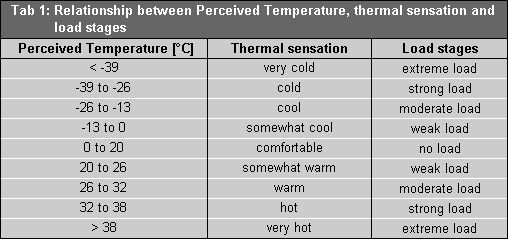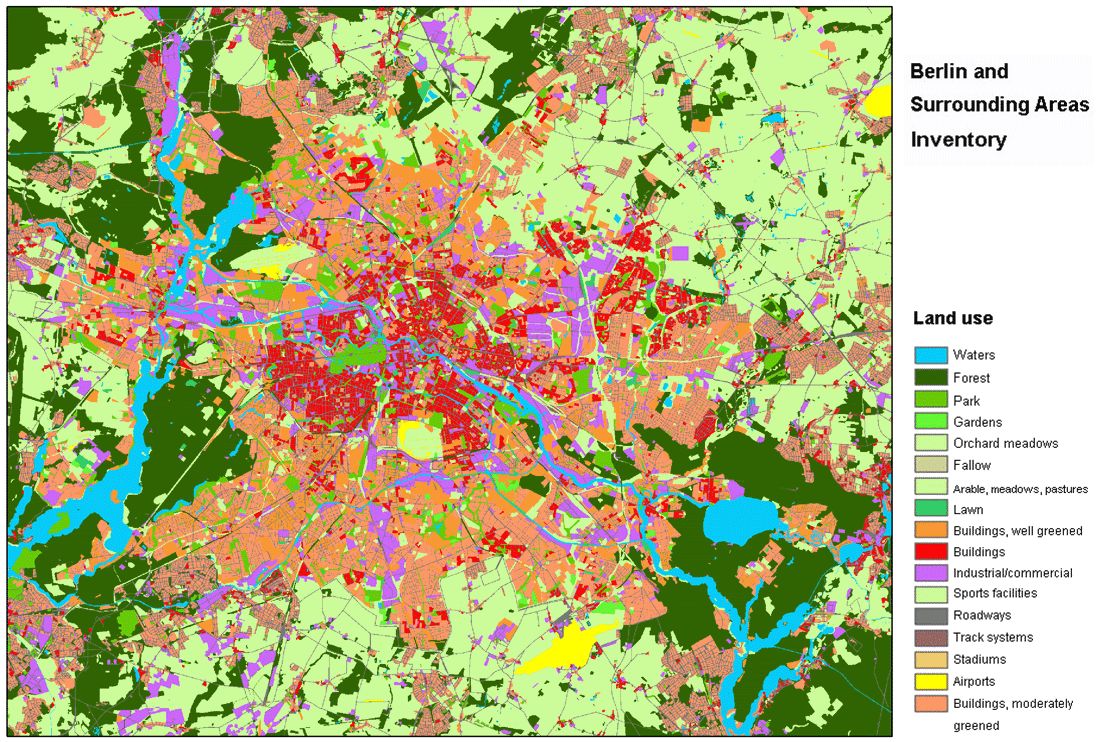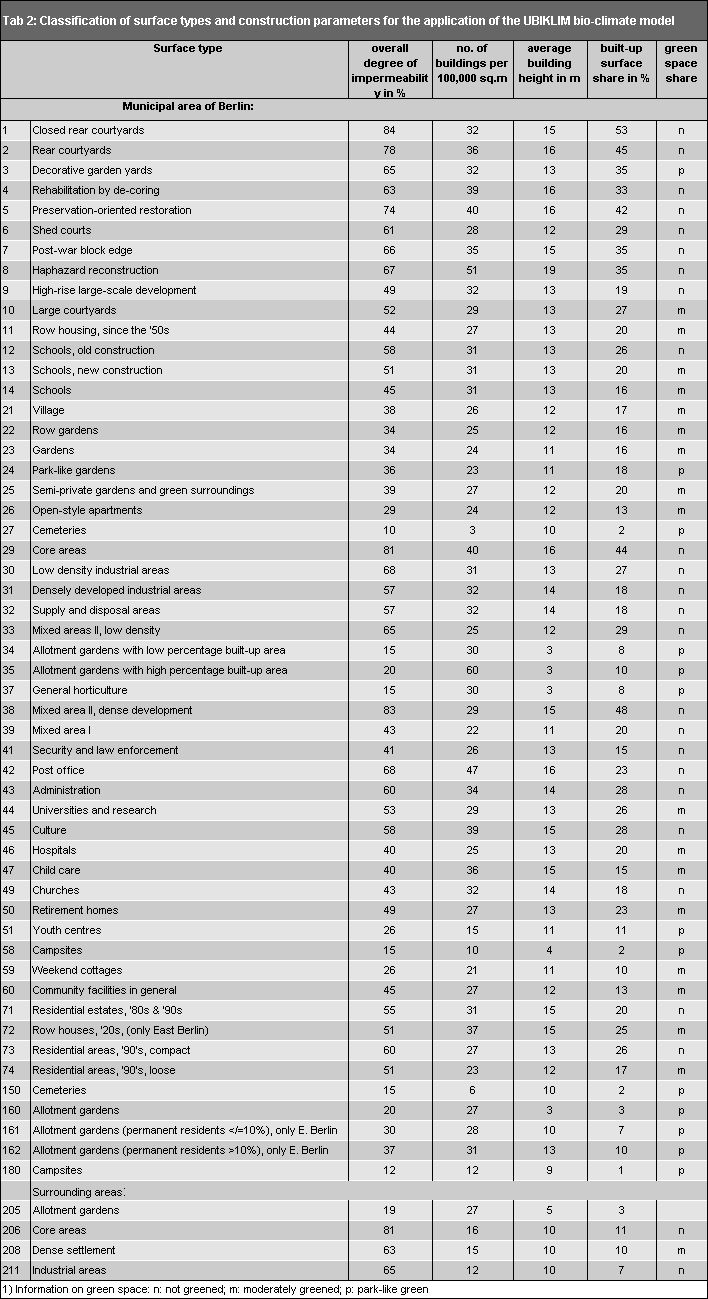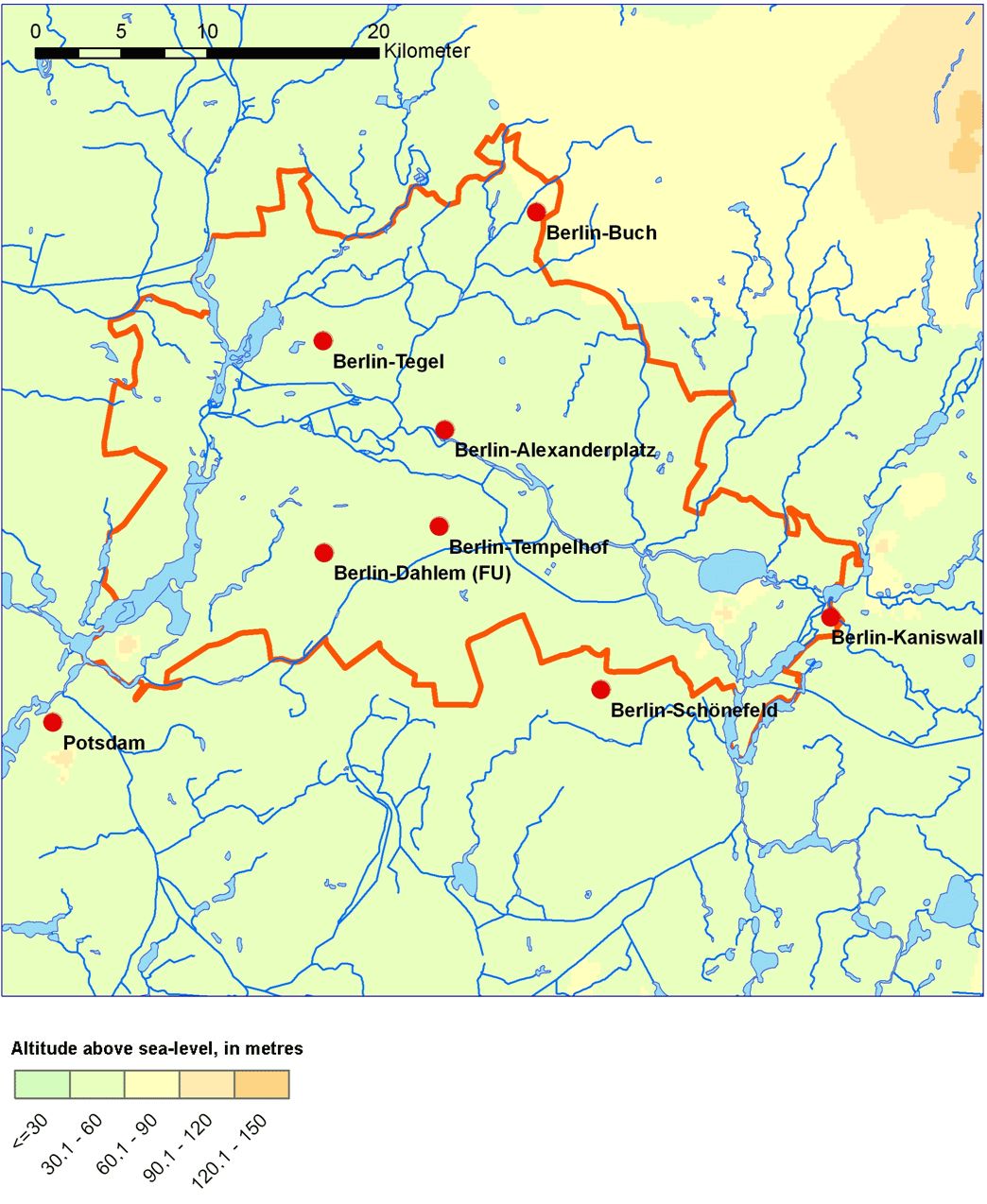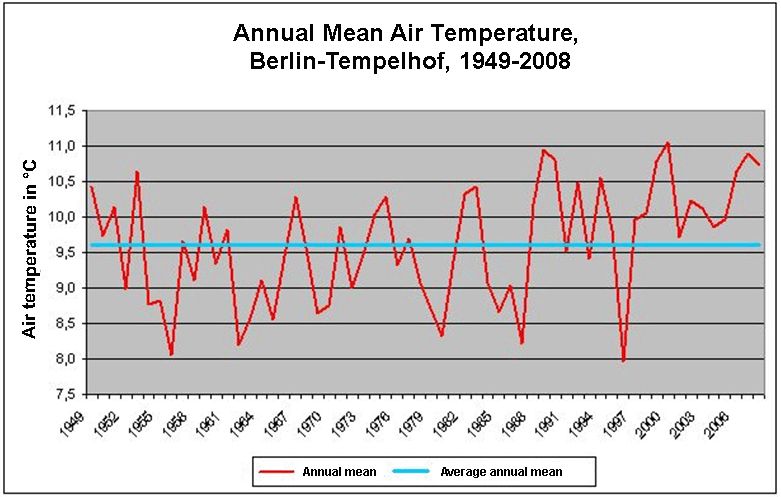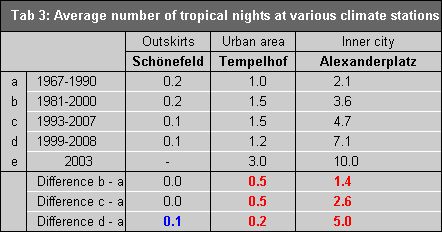The Urban Bio-Climate Model UBIKLIM
The atmosphere and hence the climate are part of the environment with which the human organism must constantly deal in order to maintain a balance of life functions and thus of human health. The required adaptation performance can be calculated from human heat budget models (VDI 1998), which objectively ascertain the connection between human beings and the atmosphere, both qualitatively and quantitatively. They take into account not only the air temperature, but also wind, humidity and solar radiation conditions, as well as the activity and clothing of the people. The DWD uses the Klima-Michel Model (Jendritzky et al. 1990). It is based on Fanger’s Comfort Equation (1972), including a correction by Gagge et al. (1986) that improves its ability to account for hot and humid conditions. It combines all quanta relevant for the human heat budget, and provides a statement about the average subjective feeling of humans (comfort, thermal load, cold stress). The theoretical person thus assessed is named “Michel” – an average male, 35 years old, 1.75 m in height, and 75 kg in weight.
Perceived Temperature, measured in °C, is used to describe thermal sensation (Staiger et al.1997). It compares the actually existing conditions found with the temperature that should prevail in a standard environment in order to create an identical feeling of warmth, comfort or coolness. It is assumed that clothing always varies on a scale between light in summer and heavier in winter, so that a person always feels as comfortable as possible. In Table 1, the Perceived Temperatures are assigned to human thermal sensation, and to the respective load stages.

